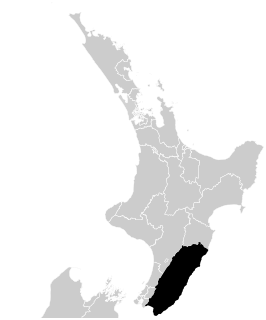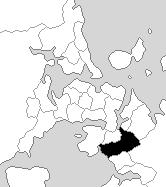Related Research Articles

The 1881 New Zealand general election was held on 8 and 9 December in the Māori and European electorates, respectively, to elect 95 MPs to the 8th session of the New Zealand Parliament.
Albany was a New Zealand electorate. It was located in north Auckland, and named after the suburb of Albany. It existed from 1978 to 1984, and then was reinstated in 1987 before its final abolition in 2002.

Wairarapa is a New Zealand parliamentary electorate. It was first created in 1858 and existed until 1881. It was recreated in 1887 and has since existed continuously. In the early years, the electorate was for a time represented by two members. Wairarapa has been held by Kieran McAnulty since the 2020 election.
Hauraki is a former New Zealand parliamentary electorate, from 1928 to 1987 and 1993 to 1996. In the 1987 general election it was renamed Coromandel, the name that had been used from 1972 to 1981. In 1993 it reverted to Hauraki, but became Coromandel again for the first MMP election in 1996.
Franklin was a rural New Zealand parliamentary electorate. It existed from 1861 to 1996 during four periods.

Birkenhead was a New Zealand Parliamentary electorate on Auckland's North Shore from 1969 to 1996, when it was absorbed into the Northcote electorate.
Waitemata was a New Zealand parliamentary electorate, from 1871 to 1946, and then from 1954 to 1978. It was represented by 18 members of parliament.

Otara was a New Zealand parliamentary electorate in Auckland, from 1984 to 1996. It existed for four parliamentary terms and was represented by three members of parliament, two from Labour and one from National.
Wellington South is a former New Zealand parliamentary electorate. It existed for two periods between 1881 and 1946. It was represented by seven Members of Parliament.
West Coast is a former New Zealand Parliamentary electorate, from 1972 to 1996.
West Auckland is a former New Zealand parliamentary electorate on the western outskirts of Auckland, created for the 1984 election from part of the former Helensville electorate. The electorate was abolished for the 1993 election, and split between Henderson and Waitakere electorates.
Ohinemuri is a former New Zealand parliamentary electorate. It existed from 1896 to 1928, and was represented by five Members of Parliament.
Inangahua is a former parliamentary electorate in the Buller District, which is part of the West Coast region of New Zealand, from 1881 to 1896. The town of Inangahua Junction, which gave the electorate its name, was located in the adjacent Buller electorate until 1887.
Mongonui was a parliamentary electorate in the Far North District in the Northland region of New Zealand, from 1861 to 1870. It was represented by three Members of Parliament.
Mornington is a former parliamentary electorate from 1946 to 1963, centred on the suburb of Mornington in the city of Dunedin, New Zealand.
Mataura was a parliamentary electorate in the Southland Region of New Zealand, from 1866 to 1946.
Ponsonby was a parliamentary electorate in Auckland, New Zealand from 1887 to 1890 and from 1946 to 1963. The Ponsonby electorate was represented by two Members of Parliament.
Hawke's Bay was a parliamentary electorate in the Hawke's Bay Region of New Zealand from 1881 to 1996. In 1986 it was renamed Hawkes Bay.
Franklin South was a parliamentary electorate in the southern part of the Auckland Region of New Zealand from 1881 to 1890. During the three parliamentary terms of its existence, the electorate was represented by Ebenezer Hamlin.
John Lundon was a 19th-century Member of Parliament from Northland, New Zealand.
References
- McRobie, Alan (1989). Electoral Atlas of New Zealand. Wellington: GP Books. ISBN 0-477-01384-8.
- Wilson, James Oakley (1985) [First published in 1913]. New Zealand Parliamentary Record, 1840–1984 (4th ed.). Wellington: V.R. Ward, Govt. Printer. OCLC 154283103.